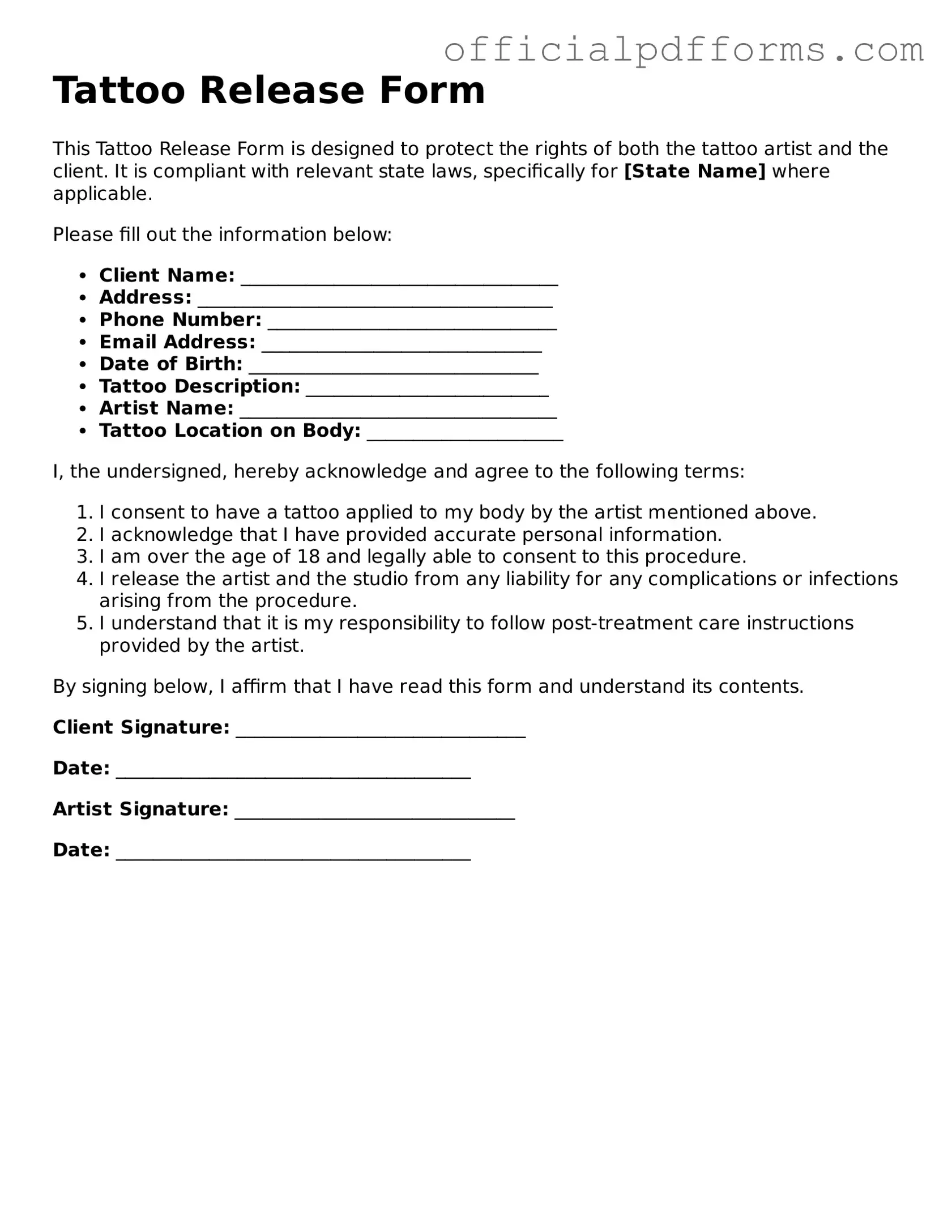Steps to Filling Out Tattoo Release
Completing the Tattoo Release form is a straightforward process that requires careful attention to detail. This document is essential for ensuring that all parties involved understand the terms and conditions related to the tattooing process. Follow the steps outlined below to accurately fill out the form.
- Begin by entering your full name in the designated field at the top of the form.
- Provide your date of birth. Ensure that the format matches what is specified on the form.
- Next, include your contact information, such as your phone number and email address.
- Clearly state the name of the tattoo artist or studio where the tattoo will be performed.
- Describe the tattoo design, including size and placement on your body. Be as specific as possible.
- Read through the consent section carefully. This section outlines the rights and responsibilities of both you and the tattoo artist.
- Sign the form in the designated area to indicate your consent and understanding of the terms.
- Date your signature to confirm when the form was completed.
Once you have filled out the form, review it for accuracy. Make sure all information is correct and legible before submitting it to the tattoo artist or studio.
